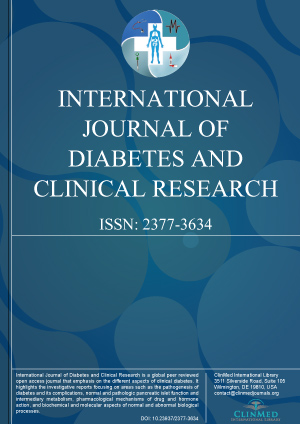Open Access DOI:10.23937/2377-3634/1410006
Recent Advances in Insulin Therapy for Diabetes
Aiman Ahmad, Iekhsan Othman, Anuar Zaini Md Zain and Ezharul Hoque Chowdhury
Article Type: Review Article | First Published: October 27, 2014
Diabetes mellitus is a chronic disease affecting a great number of the world's population. Insulin therapy for diabetes is most commonly delivered via subcutaneous injections, up to four times a day. Long-term insulin therapy, compounded by the invasive nature of its administration, has caused problems with patient compliance, ultimately inflencing patient outcomes. Extensive research has been carried out to date, to explore possible improvements to insulin therapy for diabetic patients, with so...
Open Access DOI:10.23937/2377-3634/1410005
Novel Insulin Receptor-Signaling Platform
Fiona Haxho, Farah Alghamdi, Ronald J Neufeld and Myron R Szewczuk
Article Type: Review Article | First Published: October 30, 2014
Insulin receptor (IR) signaling plays a key role in the regulation of glucose homeostasis. A dysfunctional and/or unregulated IR activation has been shown to cause a range of clinical manifestations including insulin resistance, type 2 diabetes, obesity, cancer, hypertension, and cardiovascular disorders. The molecular mechanisms mediating IR activation have become an important area of scientifi and clinical research. Here, we summarize the current understanding of IR structure, function, and si...
Open Access DOI:10.23937/2377-3634/1410004
Endothelial Function in Obese and Overweight Patients: The Role of Olive Oil, Fish and Nuts
Marco Matteo Ciccone, Pietro Scicchitano, Francesca Cortese, Michele Gesualdo, Fara Fornarelli, et al.
Article Type: Research Article | First Published: October 22, 2014
Objective: To assess the effect of olive oil, non fried fih and nuts on endothelial function in overweight/obese patients.
Methods: 47 overweight/obese patients (24 men, mean age 54 +/- 11 years) fed healthy diet (HD) defied according to the NuretaPREDIMED study for 3 months; after this 3 months of HD, the patients were blindly divided into 4 groups: Controls (24: HD), Group A (8: HD+olive oil), Group B (8: HD+not-fried fih), Group C (7: HD+nuts). These four groups were also followed-up for fur...
Open Access DOI:10.23937/2377-3634/1410003
Involvement of Regucalcin in Lipid Metabolic Disorder and Diabetes
Masayoshi Yamaguchi
Article Type: Editorial | First Published: October 03, 2014
Obesity and diabetes are currently a major health problem worldwide with growing in prevalence. The incidence of metabolic disease, including type 2 diabetes with obesity, is increased to epidemic levels. Obesity and diabetes induce secondary diseases with various pathophysiologic states, which are important in clinical aspects including cardiovascular disease, neural disturbance, kidney disease, osteoporosis and cancer. Obesity is based on stimulation of adipogenesis. Bone marrow mesenchymal st...
Open Access DOI:10.23937/2377-3634/1410001
The Role of OSA on Metabolic Disorders
Patrizio Tatti
Article Type: Editorial | First Published: October 01, 2014
Obstructive Sleep Apnea (OSA) is a frequent disorder in the general population, and even more common in the diabetic population, with incidences reported ranging from 17 to 48%, although these figures are probably an underestimation. As this disorder is so widespread, it is often accepted and dismissed. Patients themselves, often omit mentioning that they suffer from sleep apnea to the doctor. In extreme cases various surgical interventions have used, however with not great success, some reports...

